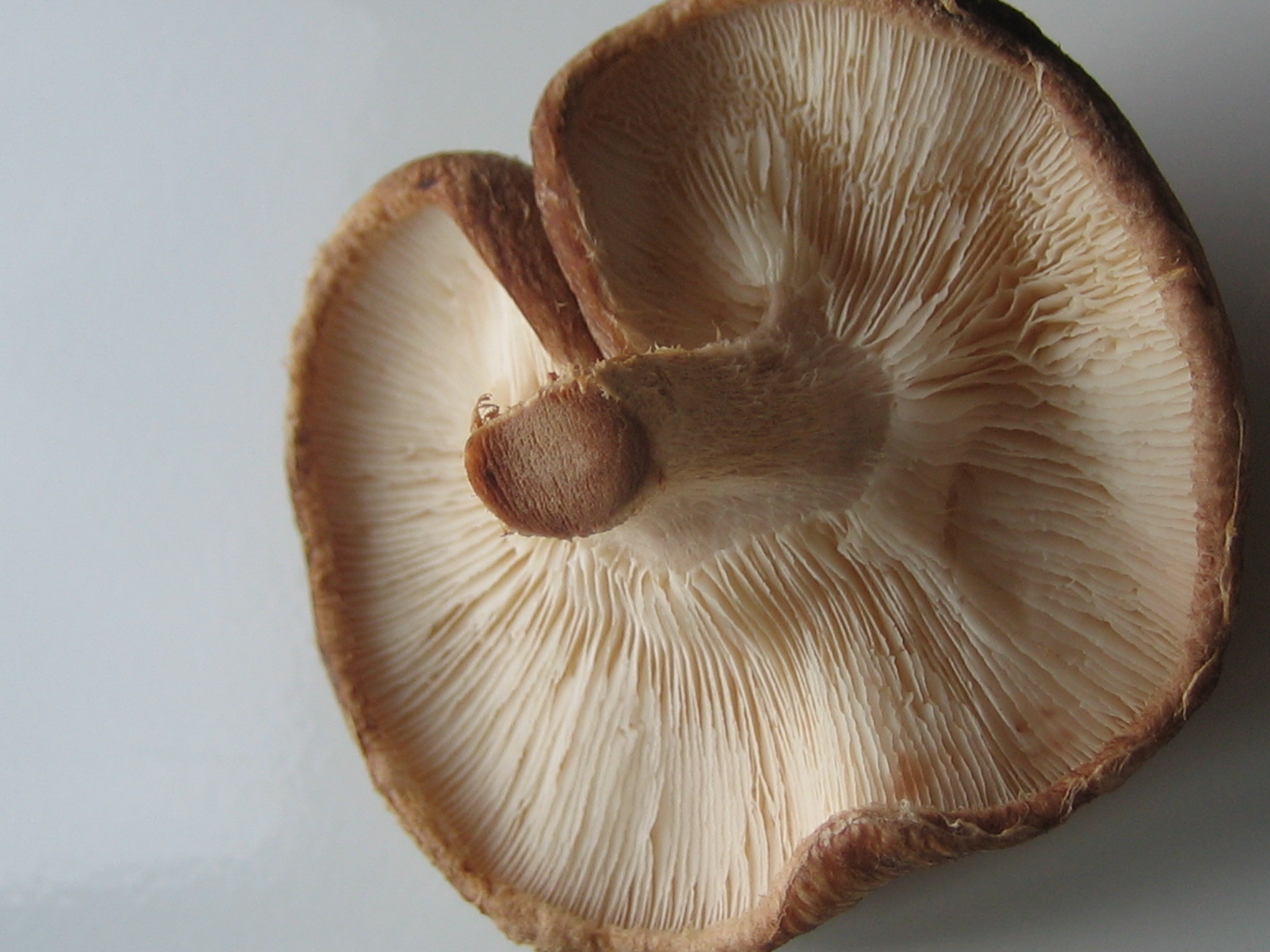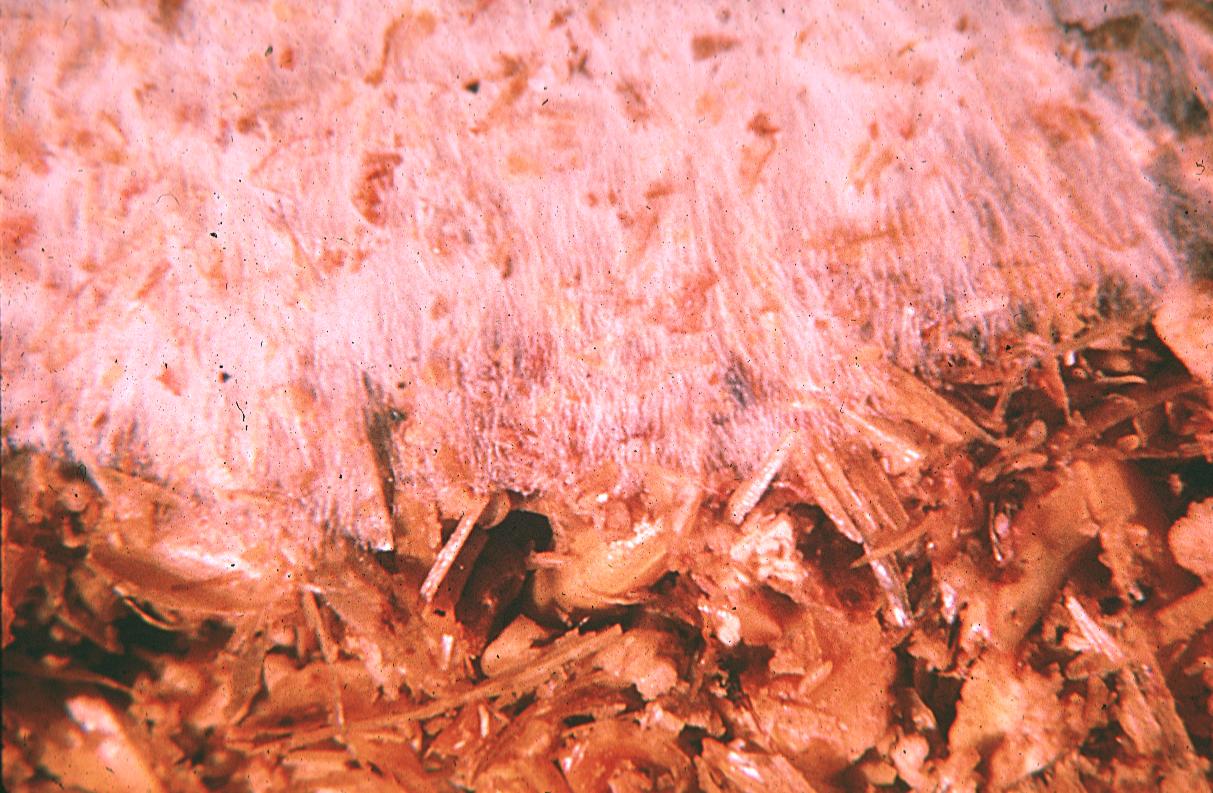Home | Habitat | Nutrition | Reproduction | Interactions | Interesting Facts & About Me | Sources
Adaptations
BasidiaOne adaptation of Lentinula edodes discussed in the reproduction section is the formation of basidium. Basidiomycetes separate themselves from the other phyla of fungi through this unique reproductive structure. The spores produced on the basidium are colorless, but when they are grouped together their overall color is white.
Below is a view of the gills of the Shiitake where the basidia are located.
|
Mycelia of the Shiitake mushroom.
Photo Copyright: Tom Volk
|
MyceliaAnother adaptation of the Shiitake mushroom, and all other multicellular fungi, is the production of mycelia. Mycelia are responsible for the absorption of nutrients through extracellular digestion. The mycelia of Shiitake typically has a white appearance. Water and temperature are both important factors for the development of mycelia growth. If conditions are too hot and too wet, molds will begin to form. There is a special stage in the growth of mycelia called the mycelia running stage. During this stage, which occurs after spawning, the mycelium secrete enzymes that help to break down hemicellulose, cellulose, and lignin. These broken down molecules can then allow for mycelia growth, because they are used as nutrients for the mycelia. |

